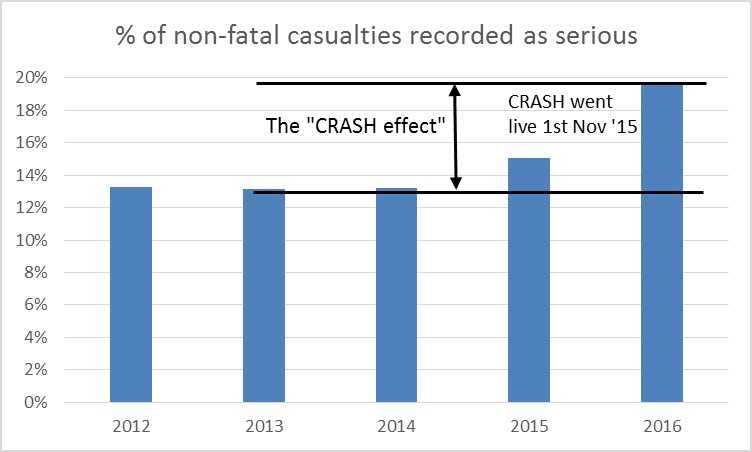Collision data
Introduction
The good news is that roads in Great Britain are some of the safest in the world, and over recent years have been getting even safer. In 2006 there were 31,845 people killed or seriously injured (KSI) on roads in Great Britain, 1,174 of them in Essex. By 2018 this had fallen to 27,295 for Great Britain and 931 for Essex.
The Safer Essex Roads Partnership (SERP) is working to continue this reduction in casualty numbers, with a target to reduce the number of KSIs in 2020 by 40% from the 2005-2009 average. However, this is merely an interim target as we believe one casualty is one too many, so the ultimate aim is for no KSIs on the roads of Essex – this is known as ‘Vision Zero’. During 2018 there were 49 people killed in road traffic collisions on the roads of Essex, so to achieve this vision everyone needs to work together and make small changes to how they use the road.
Explore our data
The charts below show the last 5 complete years’ worth of casualty data. Click on the diagonal arrow at the bottom right corner to view in full screen mode. There are 6 pages of data, click on the charts to filter the visuals on each page by the element you have clicked on, hold down ‘Ctrl’ while clicking to select multiple data elements. Use the mouse roller to zoom in on the map and click+drag to pan the map. The map will respond more quickly to navigation inputs if the filters have been used to reduce the amount of data loaded into the map.
Primary contributors: Road traffic collisions are complex multi-factor events, often with many underlying causes contributing to the collision. Collisions recorded by the Police are given up to six ‘contributory factors’ which are attributed to a driver, rider or pedestrian involved in the collision. The data in slide 5 above uses the first contributory factor listed for each collision to indicate which party was likely to have contributed most to the collision.
Jargon Buster
See our jargon buster for definitions used in leaflets and other materials produced by the SERP
What is “The CRASH Effect”?
In November 2015 Essex Police adopted a new computer system called CRASH to record road traffic collisions, this system is now used by around half of the Police forces in the UK. The previous method of recording used paper forms where the reporting officer would record the casualty severity using a rule of thumb based on their overall impression of the injuries sustained.
CRASH records each individual injury and determines the overall severity by taking the most severe single injury and applying a severity classification rule issued by the Department for Transport. Although the rules have not changed, they are now applied more consistently and less subjectively, leading to an improvement in data quality. One consequence of this is that the proportion of non-fatal casualties recorded as being ‘serious’ has increased. This is illustrated in the graph below.
This shows that prior to the adoption of CRASH, around 13% of non-fatal casualties were consistently recorded as serious. This proportion has increased to around 20% since CRASH was adopted. Other indicators suggest the actual number of serious injuries has remained fairly stable, but a project is underway to use hospital trauma data to improve our understanding of longer term casualty trends.
Word Clouds
Our word clouds show the most commonly used descriptive words from records for serious and fatal collisions that took place during 2015 (images courtesy of tagul.com). Each cloud shows the words that appear most frequently for each user group, where somebody from that user group contributed towards the collision.


